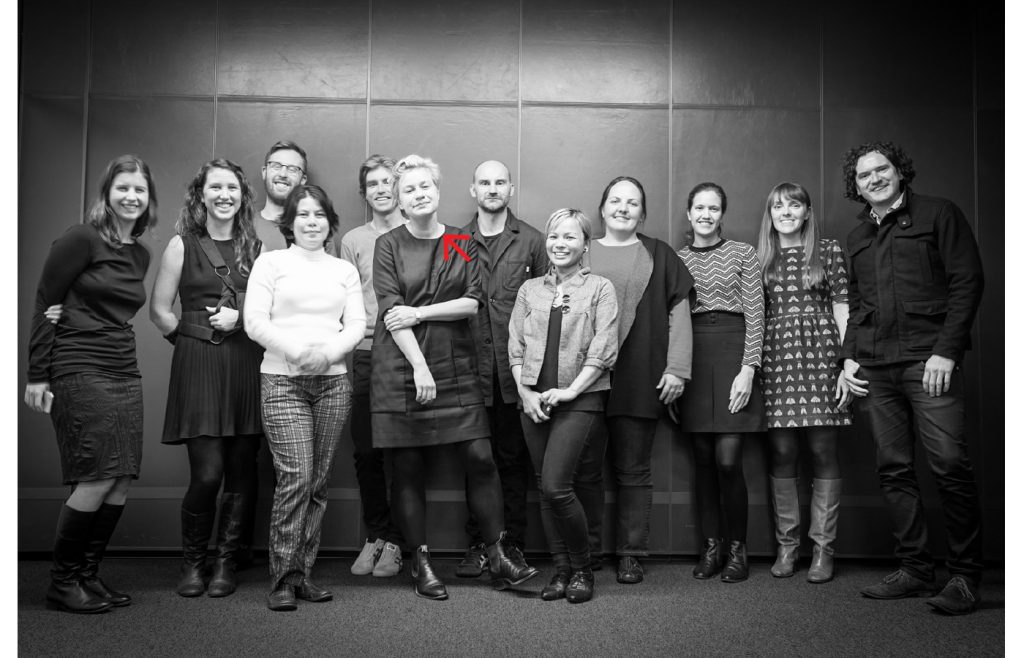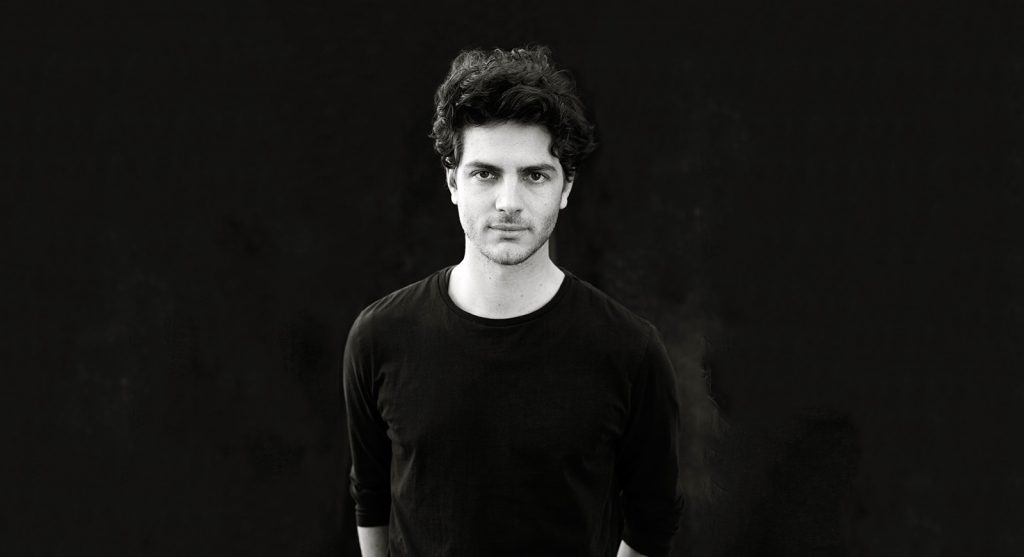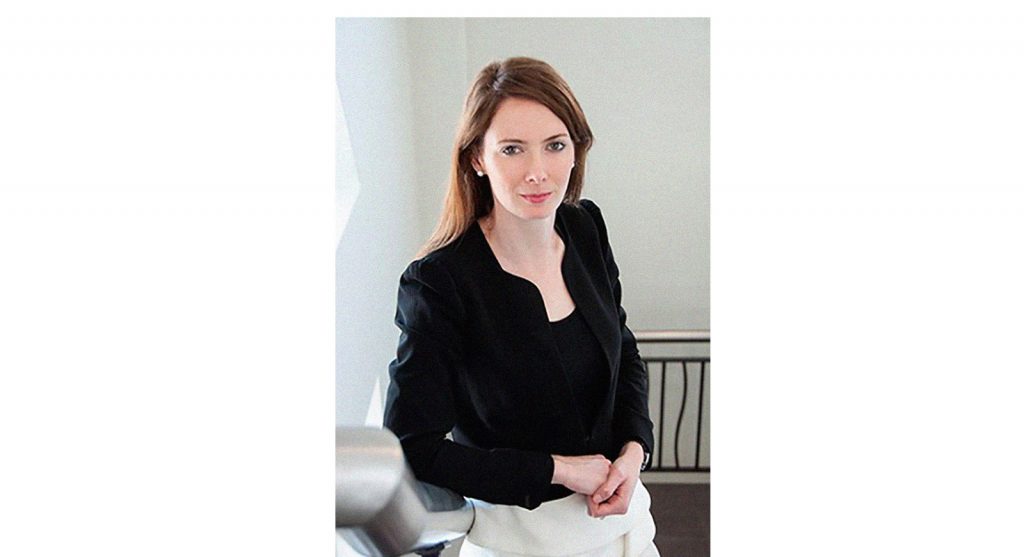



table of contents

previous articles

next articles
Feature article



CONTENTS
- Illustration above by Hannah Slater and Casey Bryant
PATHWAYS TO EMERGING PRACTICE
Ksenia Totoeva
.
Ksenia Totoeva is an architect with Tonkin Zulaikha Greer and the current EmAGN Chair
‘Remaining connected and informed is probably a big part of how I will continue to navigate practice’
Ksenia Totoeva: I have always been community and people focussed. My first five years in the profession were at Lahznimmo Architects, where I worked on an amazing bunch of projects in education, community and adaptive reuse. The practice was a very supportive environment for a graduate; there were lots of opportunities to learn and the work was challenging but fun. I realised early on that most of the directors were involved in the profession outside of practice, mainly through teaching, writing and being engaged members of various committees, forums and juries. Their example encouraged me to go off and pursue external interests alongside practice.
I have been involved with DARCH EmAGN for four years and have seen it grow to be a very active outfit both in Sydney and nationally. EmAGN is the Institute’s Emerging Architects and Graduates Network. With the aim of creating a voice and a space for graduates and emerging architects in the profession, EmAGN has organised talks and exhibitions, toured buildings and factories, run technical seminars and mentoring, and has thrown a couple of rooftop parties. EmAGN has allowed me to feel a part of a professional community but has also given me the opportunity to create that same community.
My focus has been on doing lots of different things with many different people, whether it’s at work, through teaching or in my many Institute activities. This has always been in an effort to better understand our professional landscape and my place in it. I instinctively feel that the more I know about it, the better I can hope to make it in the future. I have yet to find a particular abiding interest or any kind of clear goal and perhaps I never will. This is partly because I’m pretty curious about many things and partly because I feel like I have a lot more to learn. Essentially, I practise practice.
.
.
.
Tomek Archer
.
Tomek Archer is the director of Archer Office, which in 2016 was listed in Wallpaper magazine’s annual Architects Directory of 20 emerging practices to watch from around the world.
‘We aim to provide the infrastructure, at all scales, to support an enriched and inclusive urban experience’
TOMEK ARCHER: I completed my first architecture degree at the University of Sydney, a school that placed a strong emphasis on social concerns and craft. It was during a furniture design elective that I created the Campfire Table. I still reference this piece as a relevant first project, as it was conceived as a piece of cultural infrastructure that brought people together.
Prior to establishing Archer Office in 2013, I worked with Johnson Pilton Walker on a range of commercial and public projects and at Hill Thalis on a range of multi-residential projects. I believe that the mentorship at each stage formed my view of the role architects can play as professionals and advocates through practice.
Archer Office works across a diverse range of typologies. Recently we have worked on several private residences, a pair of retail buildings for Lend Lease, a restaurant precinct in Melbourne, a masterplan for and upgrades to Belvoir Street Theatre, an interior ‘forum’ for Woolworths and an interior pavilion at Sherman Contemporary Art Foundation. While our practice is varied, our ambition remains consistent: we aim to deliver more effective outcomes with fewer resources. We are interested in exploring a model of urbanism that is particular to a place, is inclusive, public and responds to the climate. We do this through the design of architectural projects that often encourage a degree of flexibility. We also do this through the design of function-specific furniture. We believe that these two project types – function specific infrastructure that can be moved and site-specific architectural installations that afford flexibility – are natural complements to each other.
.
.
.
Clare Sowden
.
Clare Sowden is director of development at Price Waterhouse Cooper and was listed in Urban Land Institute’s 2014 ‘40 under 40’
‘Architecture is made when the decisions are made’
CLARE SOWDEN: As a mate of mine who works across continents and cultures told me recently, I am a ‘hybrid’; both a trained architect and director of development. I am responsible for large scale, multi-billion dollar development projects. My job includes leading the consultant team of architects and building consultants, and being responsible for all aspects of the program and financial performance. Although I don’t get to prepare the drawings anymore, I write the briefs and lead the team of people who are required to navigate projects from vision to realisation.
From my perspective, architecture is made when the decisions are made. When the strategy and the investment objectives materialise into form is the moment that architecture begins, and this to me, is as interesting as the creation of a beautiful set of documentation to construct the building. The fusion of architecture and investment objectives is a really interesting nexus, as it navigates the tension between investment and form.
As a young architect at SJB, I was exposed to development managers who would instruct us on projects. I recall working just before the GFC on endless feasibility studies for various sites and none of the projects ‘stacked up’. As the architect, we were not privy to the internal workings of the financial feasibility and this is where my interest in development, investment and architecture started.
This interest was cemented further following a lecture that Adam Haddow gave following his Churchill Fellowship. He introduced the idea that there were people across the world contributing to architecture beyond being architects, including a group from the UK called Urban Splash, who are best described as developers for whom great design is non-negotiable. Their work still inspires me and got me thinking that perhaps I could contribute in a different way.
.
.
.
Andrew Donaldson
.
Andrew Donaldson is principal of ADAD (Andrew Donaldson Architecture and Design) and fractional lecturer, design tutor and course coordinator at the University of Newcastle
‘What might set us apart is our focus on becoming a growing regional launch pad’
ANDREW DONALDSON: The best description for the particular way I practice Architecture within the wider field would be: immersive.
Reflecting on the idea of working 9 to 5, I can’t remember a single day where I have practiced solely between those hours. My wife travels overseas very often though; no two days are the same but there are around six kinds of typical workdays, that are set from the most important commitments – family, then onto project commitments. These vary from big (7 to 7), to bigger (7 to 10), to early (7 to 3) or late (12 to 10), to a (rare, but beautiful) day off.
I see my practice studio as a continuation of my teaching studios, as opportunities for my best students to gain experience, where commitment to design, originality and creativity is held as similarly important – a bridge into Sydney, as an ADAD team member, into starting their own practice or into another established practice.
My principal architectural ambitions are to push creative boundaries, solve complex spatial problems, support my family pursuing what I love. To provide a fun, hardworking, continuing mentor/learning environment for past and current students to follow their own dreams. There is no deficit within our small but optimistic world of young architectural super-talents throwing their hats in the ring, but what might set us apart is our focus on becoming a growing regional launch pad, if only at this stage bridging the Sydney/Newcastle divide. This is something I only wish to strengthen in the years to come.
That our Blackett Prize-winning adaptive re-use project, Watt Space Gallery, was our first completed architectural work, in the City of Newcastle at a time where it is in massive transition, completed with my small team of ex-students will be hard to top in the short term.
.
.
.
Raffaello Rosselli
.
Raffaello Rosselli is currently based in Sydney, having just returned from a year living and working in Hanoi, Vietnam, with architect Vo Trong Nghia
‘Being relatively unconstrained by regulations allows more space for experimentation and imagination’
RAFFAELLO ROSSELLI: I am currently working on a series of projects under my own name, as well as collaborating with my father and teaching. I started my studies as a sculptor and loved the manipulation of materials and how they come together. I was drawn to architecture as it allowed this same manipulation of materials but applied to a space you inhabit rather than just an object to be admired.
My first solo project was an adaptation of a tin shed into a studio space in a post-industrial, inner-city suburb of Sydney. This project explored the relationship between materials and time, and reused the many layers of corrugated iron that had built up on the original shed over time. Last year I was working with Vo Trong Nghia in Vietnam, who is known for his large bamboo structures.
After working excessively for a few years behind a computer screen, I fell into the familiarity of only working and thinking through a keyboard and mouse. These habits affected my creativity and the results were uninspired. Learning from this experience I have tried to change the way I practice: reduce my reliance on computers and reintroduce more hands-on atelier approaches to design, through sketching and modelling. Tutoring has helped me dwell on the creative process and exposes me constantly to new thoughts.
I am excited by the study and play of using a single material in multiple ways within a project. So that a building can have layers of material exploration much like the layers of sedimentary rock. This helps imbue the design with a sense of whimsy, historicity and place.
I believe that the increased pace of design development, Modernism’s distancing from tradition and the increased reliance on computers as the main tool for expression, can produce projects that lack detailed design exploration in the finished product. I hope that an increased priority on an atelier approach of design can be readopted.
















